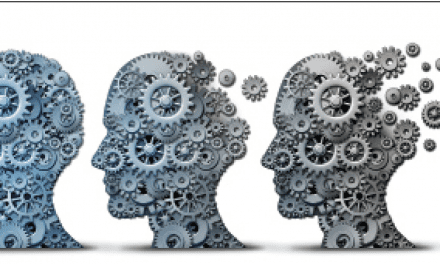Long-term hearing loss from loud explosions, such as blasts from roadside bombs, may not be as irreversible as previously thought, according to a new study by researchers at the Stanford University School of Medicine.
Using a mouse model, the study found that loud blasts actually cause hair-cell and nerve-cell damage, rather than structural damage, to the cochlea, which is the auditory portion of the inner ear. This could be good news for the millions of soldiers and civilians who, after surviving these often devastating bombs, suffer long-term hearing damage.
“It means we could potentially try to reduce this damage,” said John Oghalai, MD, associate professor of otolaryngology and senior author of the study, published July 1 in PLOS ONE. If the cochlea, an extremely delicate structure, had been shredded and ripped apart by a large blast, as earlier studies have asserted, the damage would be irreversible. (Researchers presume that the damage seen in these previous studies may have been due to the use of older, less sophisticated imaging techniques.)

|
| John Oghalai, MD |
The increasingly common use of improvised explosive devices, or IEDs, around the world provided the impetus for the new study, which was primarily funded by the US Department of Defense. Among veterans with service-connected disabilities, tinnitus is the most prevalent condition, and hearing loss is the second-most-prevalent condition. But the results of the study would prove true for anyone who is exposed to loud blasts from other sources, such as jet engines, air bags, or gunfire.
IEDs have noise levels approaching 170 decibels. Damage to the eardrum is known to be common after large blasts, but this is easily detected during a clinical exam and usually can heal itself, or is surgically repairable, and is thus not typically the cause of long-term hearing loss.
In order to determine exactly what is causing the permanent hearing loss, Stanford researchers created a mouse model to study the effects of noise blasts on the ear.
After exposing anesthetized mice to loud blasts, researchers examined the inner workings of the mouse ear from the eardrum to the cochlea. The ears were examined from day one through three months. A micro-CT scanner was used to image the workings of the ear after dissection.
“When we looked inside the cochlea, we saw the hair-cell loss and auditory-nerve-cell loss,” Oghalai said.
“With one loud blast, you lose a huge number of these cells. What’s nice is that the hair cells and nerve cells are not immediately gone. The theory now is that if the ear could be treated with certain medications right after the blast, that might limit the damage.”
Previous studies on larger animals had found that the cochlea was torn apart and shredded after exposure to a loud blast. Stanford scientists did not find this in the mouse model and speculate that the use of older research techniques may have caused the damage.
“We found that the blast trauma is similar to what we see from more lower noise exposure over time,” said Oghalai. “We lose the sensory hair cells that convert sound vibrations into electrical signals, and also the auditory nerve cells.”
Much of the resulting hearing loss after such blast damage to the ear is actually caused by the body’s immune response to the injured cells, Oghalai said. The creation of scar tissue to help heal the injury is a particular problem in the ear because the organ needs to vibrate to allow the hearing mechanism to work. Scar tissue damages that ability.
“There is going to be a window where we could stop whatever the body’s inflammatory response would be right after the blast,” Oghalai said. “We might be able to stop the damage. This will determine future research.”
The first author of the study, Sung-Il Cho, MD, assistant professor at Chosun University, was working at Stanford during the study. Other Stanford authors were graduate students Simon Gao, Jongmin Baek, and David Jacobs; senior research scientist Anping Xia, MD, PhD; research technician Rosalie Wang; research associate Felipe Salles, PhD; computer programmer Patrick Raphael; and research coordinator Homer Abaya.




